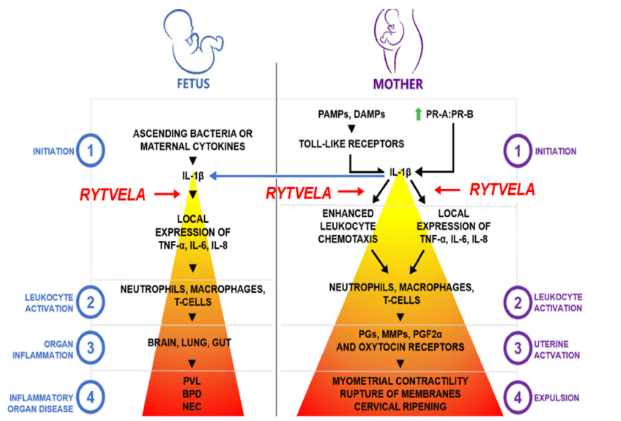Nursing interventions and Management
Nursing interventions and Management ( 6 Questions)
A nurse is monitoring a client with PROM at 34 weeks of gestation who is receiving tocolytic therapy.
Which of the following findings would indicate a potential adverse effect of the medication?
maternal heart rate of 110 beats per minute is not an adverse effect of tocolytic therapy.
It could be a normal physiological response to pregnancy or a sign of dehydration, anemia, or anxiety.
maternal blood pressure of 140/90 mmHg is not an adverse effect of tocolytic therapy.
It could be a sign of chronic hypertension, gestational hypertension, or preeclampsia.
indicates a potential adverse effect of the medication. This could be a sign of infection or inflammation, which are common complications of preterm premature rupture of membranes (PPROM) and can lead to early delivery and neonatal morbidity. Tocolytic therapy aims to prolong the latency period and reduce the risks of prematurity, but it might also prolong fetal exposure to infection.
maternal respiratory rate of 20 breaths per minute is not an adverse effect of tocolytic therapy.
It is within the normal range for pregnant women.
indicates a potential adverse effect of the medication. This could be a sign of infection or inflammation, which are common complications of preterm premature rupture of membranes (PPROM) and can lead to early delivery and neonatal morbidity. Tocolytic therapy aims to prolong the latency period and reduce the risks of prematurity, but it might also prolong fetal exposure to infection.
Normal ranges for maternal vital signs in pregnancy are:
• Heart rate: 60 to 100 beats per minute
• Blood pressure: less than 140/90 mmHg
• Temperature: 36.1°C to 37.2°C (97°F to 99°F)
• Respiratory rate: 16 to 20 breaths per minute

